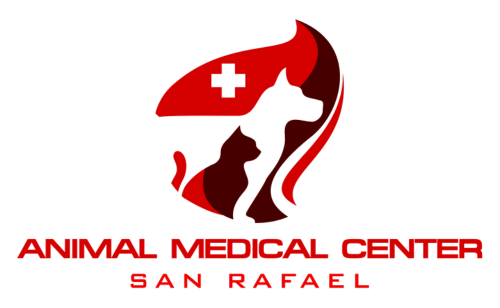Animal Medical Center San Rafael
Care Guides
Proper care is vital for your pet’s health and happiness. Ensure they receive balanced nutrition, regular vet check-ups, exercise, and mental stimulation.
Canine
Feline
Featured Care Guides
Bringing a New Kitten Home
Bringing a new kitten home is exciting. These guidelines will help you and your kitten adjust to this big change in your lives.
Brushing Your Dog’s Teeth
Periodontal (gum) disease can lead to tooth loss and affects most dogs before they are 3 years old. Bacteria from periodontal disease can spread to affect other organs and cause illness. One of the best ways to help prevent periodontal disease is to brush your dog’s teeth on a regular basis—daily if they will allow it.
Canine Nutrition
A high-quality, complete, and balanced diet is important for the health and longevity of your dog. Among other benefits, a proper diet helps build strong bones, promotes healthy gums and teeth, protects immune function, and results in a lustrous haircoat. Unlike cats, which are carnivores (meaning that they must eat meat), dogs are omnivores, meaning they can eat meat and plants as their primary food sources.
Cat Supplies
Every well-kept cat needs some basic supplies. Many kinds of supplies are available, so your choices will depend on your and your cat’s needs and preferences. Here are some basic guidelines regarding cat supplies.
Dental Exam
The term dental disease in dogs and cats is very broadly used to describe gingivitis (inflammation of the gums) and periodontitis (inflammation of the bone and other support structures around the tooth). Another term commonly used to collectively describe these two conditions is periodontal disease.
All Care Guides
10 Household Plants That Are Dangerous to Dogs and Cats
Asparagus fern (also called emerald feather, emerald fern, sprengeri fern, plumosa fern, and lace fern) is toxic to dogs and cats. The toxic agent in this plant is sapogenin—a steroid found in various plants. If a dog or cat ingests the berries of this plant, vomiting, diarrhea, and abdominal pain can occur. Allergic dermatitis (skin inflammation) can occur if an animal is repeatedly exposed to this plant.
10 Ways to Help an Arthritic Dog
Here are tips to manage this condition and minimize your dog’s discomfort.
A Pet Owner’s Guide to Flea Control
Fleas are blood-feeding parasites that can infest many species of birds and mammals. Although fleas on dogs and cats don’t infest people, fleas may bite people if an area is heavily infested. Flea infestation is one of the most common medical problems veterinarians see, and pets suffer greatly from this condition. Flea bites can trigger severe allergic reactions in some pets. The intense itching caused by flea infestation causes pets to scratch and bite themselves. This can lead to skin wounds, skin infections, and general misery for your pet. Even if your pet is not allergic to flea bites, fleas can transmit serious diseases, such as bartonellosis (the bacteria that causes “cat scratch disease” in people), and other parasites, like tapeworms.
ACTH Stimulation Test
Glucocorticoids (primarily cortisol) and mineralocorticoids are two important types of hormones produced by the body’s adrenal glands. Glucocorticoids and mineralocorticoids help regulate numerous complex processes in the body and participate in critically important functions.
Abdominal Radiography
A radiograph (sometimes called an x-ray) is a type of photograph that reveals the body’s internal organs. The procedure for obtaining a radiograph is called radiography. Radiography is a very useful diagnostic tool for veterinarians because it can help obtain information about almost any organ in the body, including the heart, lungs, and abdominal organs, as well as the bones.
